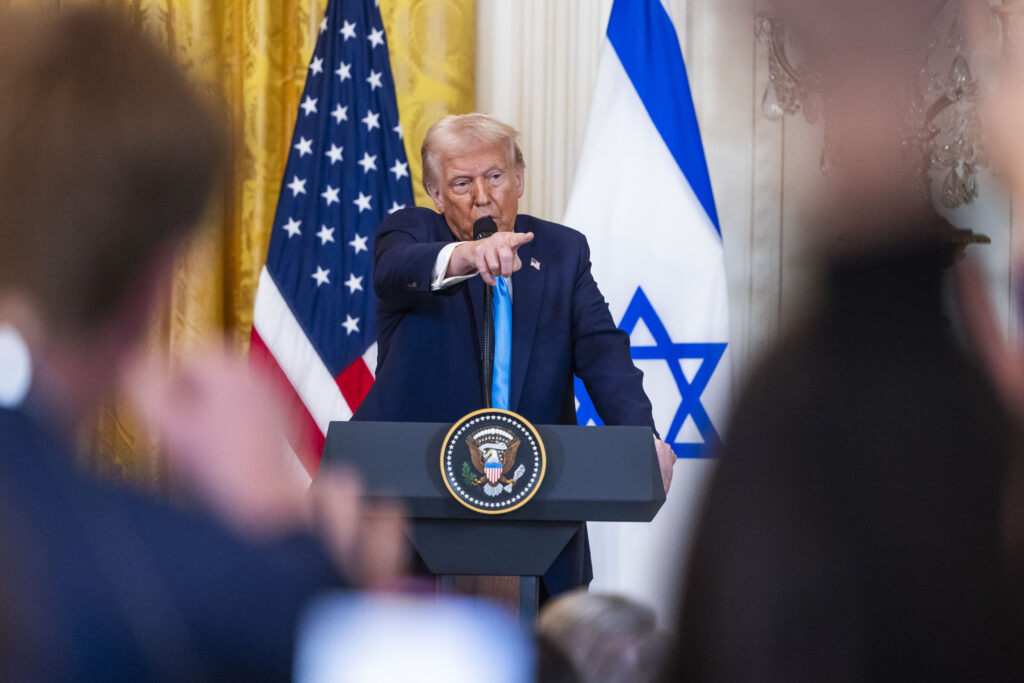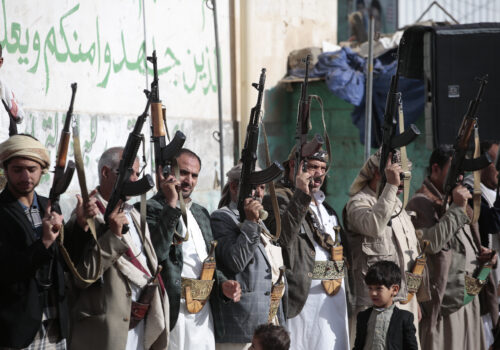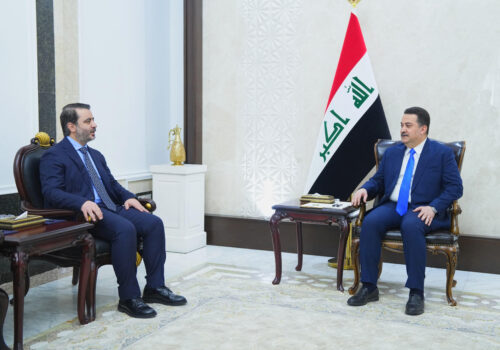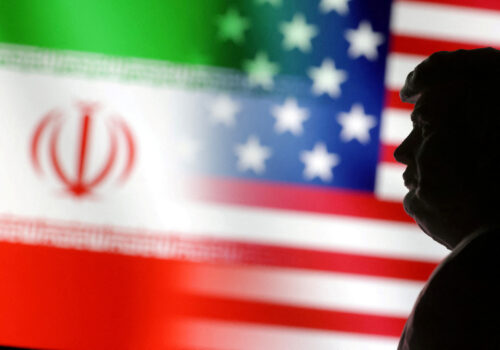One hundred days into Donald Trump’s second term, the US president’s approach towards the Middle East can be summed up with three key facets. One: Welcoming investment and business deals. Two: Utilizing regional powers to mediate international conflict. And three: trying to keep a lid on national security risks while simultaneously threatening military force.
Tariffs will not be the focus of this article, though they are rightly what nearly everyone is thinking about at the moment. The extensive tariff action taken by Trump this month spared the Gulf states from the highest new duties, but other Middle East and North African countries were hit with steep tariffs. The tariffs are likely to have two kinds of impacts. The first may take the form of collateral damage if there is reduced demand for oil due to a recession or slower global growth. The second impact could be on countries like Jordan, which may be hit with high tariffs it cannot absorb, and may potentially need to find new markets. For more analysis on the tariff impacts, check out insights from my Atlantic Council colleagues here.
Welcoming investment and business deals
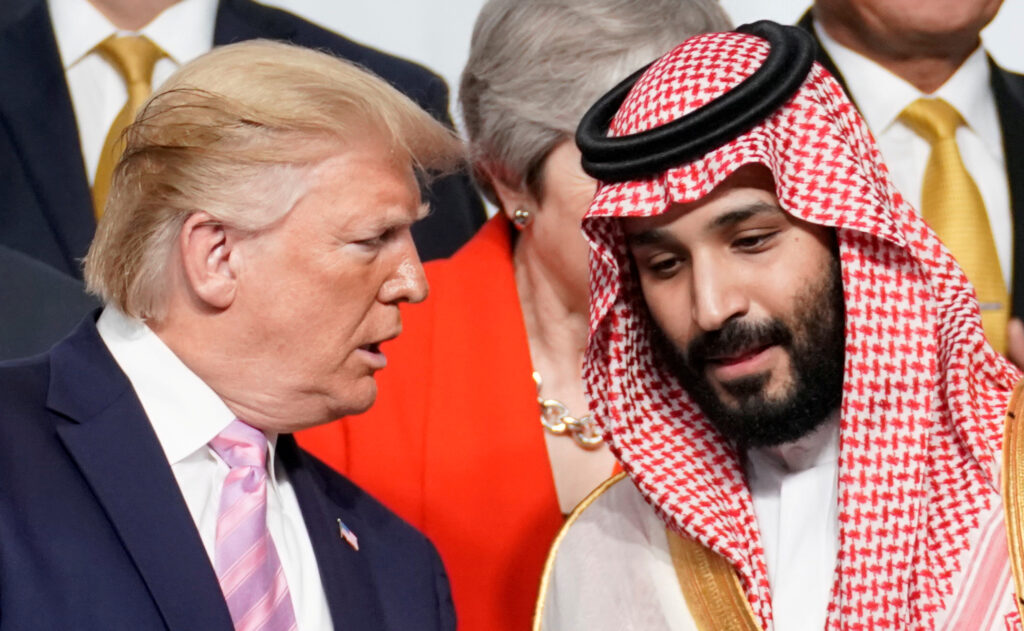
President Trump’s transactional nature and desire for more investment in the United States play to the strengths of Saudi Arabia and the United Arab Emirates. The UAE has the fourth largest sovereign wealth fund in the world, behind Norway’s and two from China. Saudi Arabia’s Public Investment Fund (PIF) is the world’s sixth-largest sovereign wealth fund. With these financial resources, Saudi Arabia and the UAE have the means to make major investments, or at least promise them.
In January, during his first phone call with Trump after the inauguration, Saudi Crown Prince Mohammed Bin Salman pledged $600 billion in investments and trade over four years. Soon afterwards, Trump said: “I’ll be asking the Crown Prince, who’s a fantastic guy, to round it out to around 1 trillion.” It remains unclear whether the Saudis will increase their pledge, especially at a time when low oil prices are constraining domestic spending at the heart of Riyadh’s Vision 2030 economic diversification efforts. It is also unclear whether the $600 billion pledged will be used to purchase US weapons, invest further in US companies or entities, such as the Professional Golfers’ Association of America (PGA), or something else.
The UAE had a similar strategy when Sheikh Tahnoon, the UAE National Security Advisor and brother of UAE President Sheikh Mohammed bin Zayed, visited Washington in March. During the visit, the UAE announced a $1.4 trillion investment pledge over ten years. The statement of planned investments does not list the dollar amount per item and includes partnerships with US companies on Artificial Intelligence, data centers, energy, and critical minerals. Some of these deals were previously announced.
One intriguing UAE investment promise is a new aluminum smelter in the United States, which would be “the first in thirty-five years” and would “nearly double US domestic aluminum production.” The United States is the UAE’s top buyer of aluminum, and the UAE is the second-largest supplier of aluminum to the United States. The twenty-five percent tariffs Trump imposed on aluminum in March could be behind the UAE’s decision to consider investing in a US-based smelter to avoid paying these new taxes. In Guinea, the UAE owns and operates a bauxite mine, which provides the raw material for aluminum, so presumably the UAE would import raw materials into the United States for use in the smelter. Given the new Trump tariffs, it is unclear if the smelter would be economically viable and would be pursued.
A key trade and investment issue to watch is whether the Trump administration classifies Saudi Arabia and the UAE as Tier One countries when it comes to high-tech chip purchases, which would give them essentially unlimited access, according to rules the Biden administration announced in January. Saudi Arabia and the UAE are currently in the Tier Two category, so they have more access to chips than countries like China in the lowest tier, but their access is still constrained. This was an issue Sheikh Tahnoon raised during his March visit to Washington, and Microsoft, which has partnered with both Saudi and Emirati entities, has called on the Trump administration to give these countries more access to chips. There is likely to be more industry and foreign government pressure on this front, especially as more restrictions are placed on China.
Related to the issue of chips’ access is whether the UAE and Saudi Arabia will hedge their technology bets and try to continue partnerships with China on AI and other high-tech projects. Or, will they choose or be pressured to keep China out of supply chains, hardware, and software that Washington sees as a national security threat, perhaps in exchange for more access to cutting-edge US chips?
Conflict mediation
In his first term, Trump chose Saudi Arabia for his first official visit as commander-in-chief. That landmark visit in 2017 delivered a $110 billion arms deal, which experts noted primarily consisted of previously agreed-upon sales. Before announcing he would attend the funeral of Pope Francis as his first foreign trip this term, Trump had planned to visit the Kingdom first during a regional trip this spring. As he explained in March, “I am going to Saudi Arabia. Normally, you would go to the UK first…I said I will go if you put up a trillion dollars to American companies…They agreed to do that. So I am gonna be going there.”
But this time around, the visit to Saudi Arabia is not just about financial investment. Another sort of deal-making is also taking place.
Saudi Arabia has taken on a new international diplomacy role by hosting several rounds of direct US-Russia talks, as well as meetings with Ukraine, in an attempt to help achieve a ceasefire. Riyadh has also offered to host a Trump-Putin meeting.
SIGN UP FOR THIS WEEK IN THE MIDEAST NEWSLETTER
Saudi Arabia is well-placed to play this role as its leadership has both the trust of Trump personally—via significant financial ties to Trump’s businesses and family—as well as a solid rapport with Russia since the Kingdom has been a “fence sitter,” refusing to participate in United States and Europe-led efforts to isolate Russia in punishment for its invasion of Ukraine in 2022. Saudi Arabia has also given humanitarian aid to Ukraine.
The Saudi approach to Russia is part of its preference to hedge its bets and prevent being pigeonholed into the United States-led camp to the extent possible. This suits the Kingdom’s economic and security interests, as it keeps its options open. Hosting talks between the United States, Russia, and Ukraine also helps raise Saudi Arabia’s global profile and cast it in a positive light as a peacemaker.
It is telling that Trump likewise plans to visit Qatar and the UAE on his first foreign trip of his second term. The UAE, like Saudi Arabia, has the financial means to make significant foreign investment in the United States. The UAE is also playing a global mediation role: it recently passed a letter from Trump to Iran’s Supreme Leader pushing for negotiations within two months. As for Qatar, it continues to play a key role working with the United States and Israel to seek a negotiated ceasefire in Gaza.
Keeping a lid on national security risks
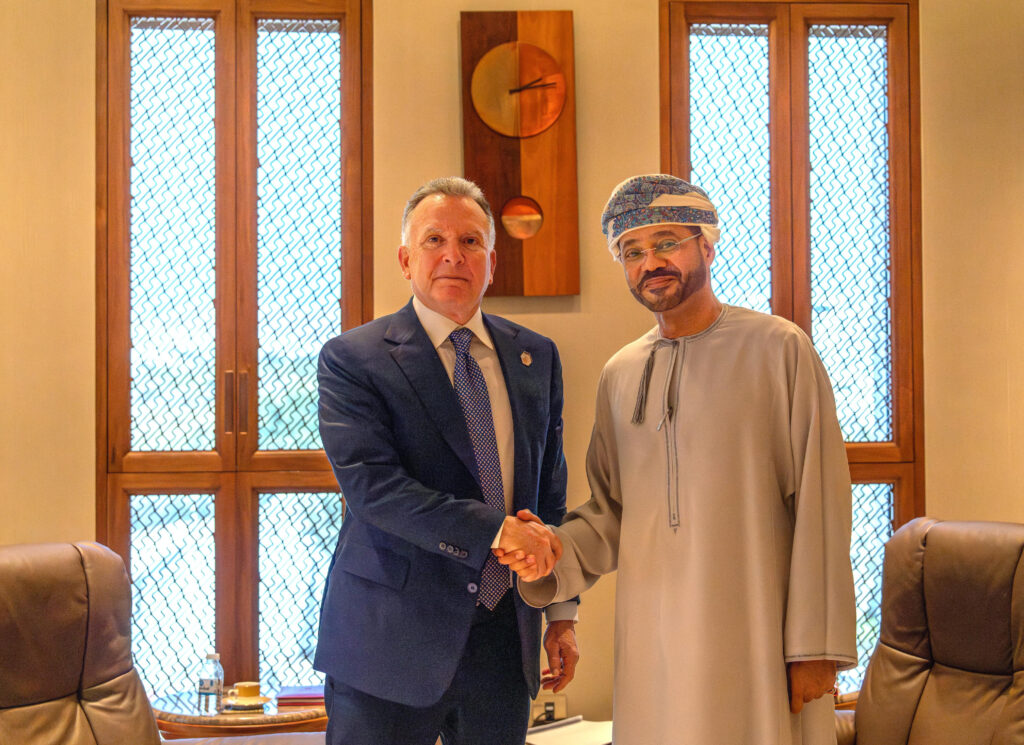
Trump does not want the United States to get involved in long, faraway wars. Neither do the majority of Americans. However, many past US presidents have been forced to focus on the Middle East, whether they wanted to or not. The following list of hot spots underscores the policy challenges the Trump administration faces. So far, Trump and his team are simultaneously using and threatening force to try to keep a lid on conflict.
Iran: As of this writing, the Trump administration has held two rounds of negotiations with the Iranians, with plans for more. However, within Trump’s senior team, there are competing views about whether Iran’s nuclear program should be completely dismantled (as US National Security Advisor Mike Waltz and US Secretary of State Marco Rubio have called for) or subject to a “verification program” (as Trump’s top negotiator, Steve Witkoff, has said). Moreover, looming over the efforts to achieve a nuclear deal is the US president’s threat that if one is not achieved, there will “be bombing the likes of which they [the Iranians] have never seen before.” Which approach will win out: negotiations, or military action (with or without Israeli support)? Iran has signaled openness to indirect talks hosted by Oman but has also threatened to pursue nuclear weapons if attacked by the United States. So far, there is no talk of including the issue of Iran’s support for groups such as the Houthis and Hezbollah in the negotiations.
The Houthis: Will the Trump administration’s new military campaign succeed in ending the Houthis’ capability and desire to attack targets in the Red Sea? Or will this military operation drag on at great cost to the United States, yielding no change in Houthi behavior? The United States has used over two hundred million dollars in munitions in just three weeks, and some military planners are worried that the amount of weapons being used is cutting into supplies that could be needed for other global contingencies. The Houthis have survived several other military campaigns by the Saudis, Emiratis, and the United States over the years, and they enjoy significant asymmetric advantages such as cheap, two thousand dollar drones and geography that allows them to quickly disperse and hide in Yemen’s mountainous terrain, especially since many of their weapons are easy to move. On the other hand, if the US campaign begins to succeed or cause real pain to the Houthis, will they seek to pressure the United States by attacking Saudi Arabia or the UAE?
Israel-Gaza: Before coming into office, Trump and his team pushed hard for a ceasefire alongside former president Joe Biden’s outgoing administration, and they achieved one. However, there now seems to be less focus on ending the devastating conflict. Trump’s threat in February to Hamas to release the hostages or “all hell is going to break out” has, in practice, meant Israel restarting the war and blocking humanitarian aid from entering Gaza. Without an alternative to Hamas rule, the militant group may hang on and continue to fight as an insurgency, replenishing its ranks by recruiting desperate people. The Israeli Defense Forces could potentially be mired in Gaza for months if not years, and the remaining living hostages may die if there is no ceasefire. Some experts also warn that the IDF may face a morale crisis, with some reservists already refusing to serve because they do not support the war. Although the conflict in Gaza is not likely to spill over to other parts of the region, if the war grinds on over the short and medium term, this likely would prevent a normalization deal between Saudi Arabia and Israel, which would thwart a key foreign policy achievement desired by the Trump administration.
Stefanie Hausheer Ali is a nonresident fellow at the Atlantic Council’s Rafik Hariri Center and Middle East Programs and a senior director at international affairs consulting firm Rice, Hadley, Gates & Manuel LLC.
The information in this article represents the views and opinions of the author and does not necessarily represent the views or opinions of Rice, Hadley, Gates & Manuel LLC.
Further reading
Fri, Mar 14, 2025
The United States’ Houthi terrorist designation unmasks Russia’s Yemen strategy
MENASource By
Yemen's Houthi rebels have become a tool of foreign powers, shifting from an Iran proxy to a Russian asset.
Wed, Mar 19, 2025
Why the United States must bridge the Iraq-Syria divide
MENASource By Sarkawt Shamsulddin
With leverage over both capitals, the United States emerges as the linchpin in delicate diplomatic moment between Baghdad and Damascus.
Fri, Apr 11, 2025
The Iran nuclear talks are Trump’s decisive moment on military strikes
MENASource By Daniel B. Shapiro
Within a relatively short time, Donald Trump is likely to face the decision point on whether or not to pursue a military strike against Iran.
Image: US President Donald Trump speaks at a press conference with Israeli Prime Minister Benjamin Netanyahu (not pictured) in the East Room of the White House in Washington, DC 04 February 2025. President Trump said that the he wants the US to take ownership position of Gaza.
